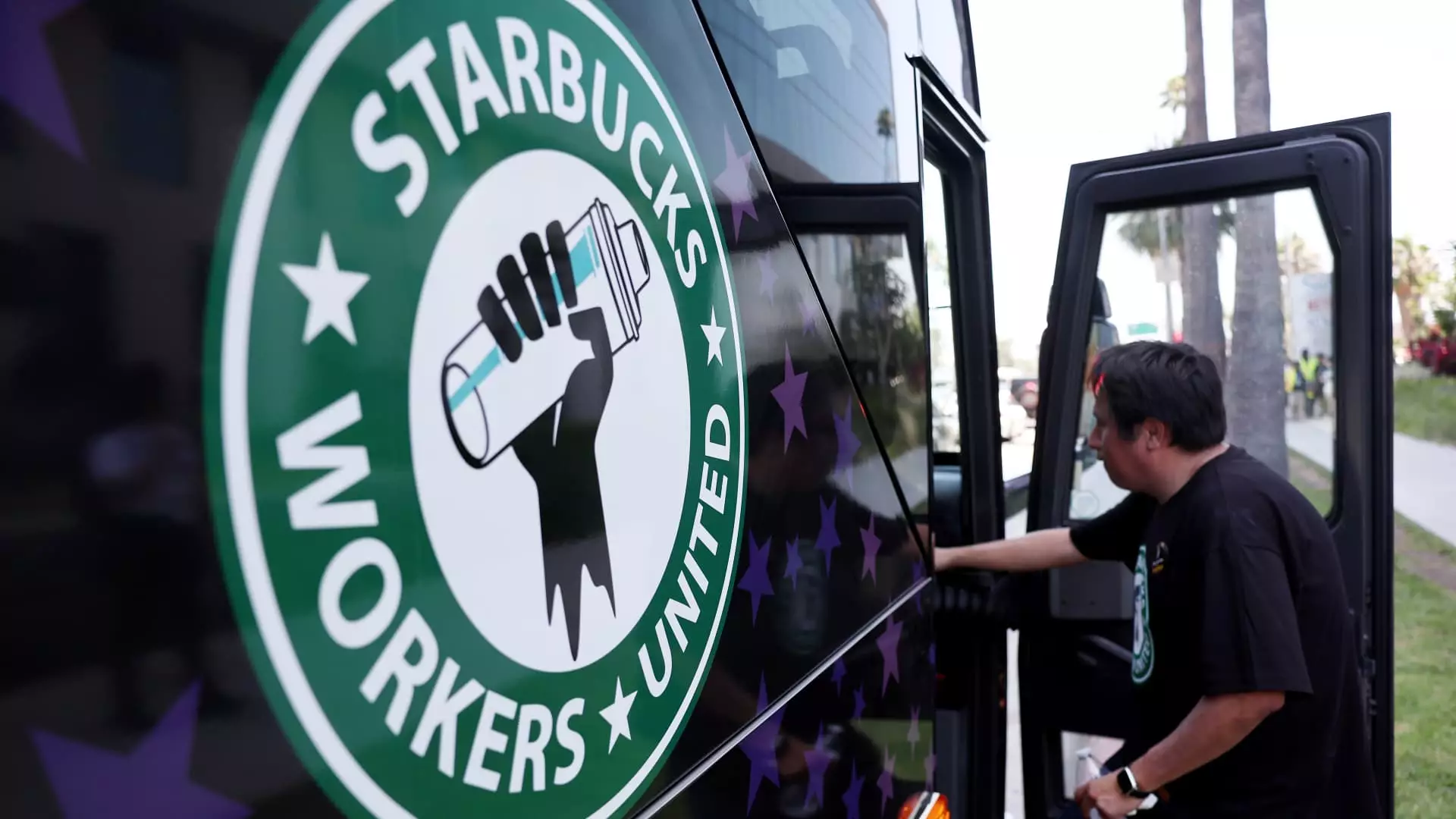In a significant development on Tuesday, Starbucks Workers United reported that an overwhelming 98% of unionized baristas voted in favor of authorizing a strike. This decision underscores the growing frustration among employees as they continue to negotiate a contract with the globally recognized coffee chain. With a series of meetings planned between the union bargaining delegates and Starbucks scheduled to culminate by year’s end, this situation is evolving into a critical juncture for both parties involved.
Despite hundreds of hours spent at the bargaining table, progress has been stymied by unresolved labor practice cases and the absence of a comprehensive compensation proposal from Starbucks. The union contends that the coffee giant has failed to address fundamental issues related to employee pay and benefits, leaving many workers feeling undervalued and unheard. In contrast, Starbucks maintains that their negotiations have been constructive, citing multiple agreements that have emerged from their discussions, particularly on economic issues deemed critical by the union.
The friction between the two sides signals a deterioration in relations, especially after previously existing dialogues that seemed to pave a way for progress. A similar pattern of conflicts was evident earlier this year, when both parties had indicated the possibility of a more constructive approach in resolving issues through mediation. However, the renewed call for a strike authorization now places the negotiations under increased pressure.
Starbucks’ history with unionization has not been straightforward. Over the past several years, the company has faced mounting challenges related to the burgeoning union movement. This has not only affected internal morale but has also triggered consumer backlash and scrutiny from lawmakers as public sentiment leans towards supporting worker rights. Former CEO Howard Schultz faced considerable scrutiny during a congressional hearing, reflecting the significant pushback against corporate attempts to quash union efforts.
New CEO Brian Niccol, who took the helm in September, faces the task of navigating these tumultuous waters with commitments to fair bargaining and initiatives such as the doubling of paid parental leave set to begin in March. However, Niccol must also manage employee expectations, especially given the less favorable pay increments reportedly on the table for baristas amid a downturn in sales at U.S. locations.
As more than 500 Starbucks locations have opted to unionize under Workers United in the wake of organizing campaigns that started in Buffalo three years ago, this moment represents a critical chapter in labor relations within the company. The unionization trend reflects broader societal shifts toward prioritizing worker rights and well-being, especially in industries heavily impacted by the pandemic.
The impending negotiations, the results of which could lead to a strike, spell potential consequences not just for Starbucks’ operational framework but also for the broader labor movement across similar corporate environments. The stakes are high as both sides strive to find common ground, with employees advocating for improved conditions, while Starbucks aims to balance business sustainability against the backdrop of evolving labor expectations. The coming days will be decisive, revealing whether a resolution can be reached or whether the strike authorization emboldens baristas to take more drastic measures to assert their demands.

